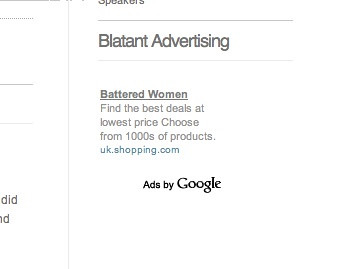On the weekend, I caught up with Cameron Reilly of the Podcast network , and he was telling me about his views on monetising podcasts. It got me thinking again about those things I like to think about: how content can be monetised. Despite the growth in online advertising which is tipped to be $80 billion, I think we still have a lot more innovation to go with revenue models, especially ones that help content creators.
Advertising is a revenue stream that has traditionally enabled content-creators to monetise their products, in the absence of people paying a fee or subscription. With the Internet, content has undergone a radical changing of what it is – digital, abundant, easily copied – whilst the Internet has offered new opportunities for how advertising is done. However, the Internet has identified the fundamental weaknesses of advertising , as consumers can now control their content consumption, which allows them to ignore embedded advertising altogether. Content on the other hand, still remains in demand, but means of monetising it are slipping into a free economy which is not sustainable. I make that point to illustrate not that professional content creation is a sunset industry – but rather there’s a big market opportunity as this massive industry needs better options.
"Hey man, there’s this new thing called the Internet. Sounds pretty cool"
One of the biggest innovations in advertising (and enabled by the Internet) is of contextual search advertising. This has been popularised by Google, which now makes 98% of its $17 billion revenue from these units. This advertising dominates online advertising (40% of total) because of its pull nature, whereby key-words stated by a consumer in effect state their intention of what they are interested or would like to purchase. Whilst this is a highly efficient form of advertising, it also has its weaknesses – for example, it is not as effective outside of the search engine environment. Google makes 35% of its revenue from the adSense network , where these contextual ads are placed on peoples personal websites. Evidence from high traffic bloggers suggests they barely make enough money through this type of advertising. Another point to consider is that aspects of the Google network include significant partnership agreements like the one with AOL which accounts for 10% of Googles revenue (this is a 2005 figure which has likely changed, but Google does state in their 2007 report "Our agreements with a few of the largest Google Network members account for a significant portion of revenues derived from our AdSense program. If our relationship with one or more large Google Network members were terminated or renegotiated on terms less favorable to us, our business could be adversely affected.". AOL most recently reported for Q1 2008 half a billion dollars largely from search advertising ).
Other attempts at creating more efficient advertising which have existed for over a decade, have come in the form of profiling or behavioural tracking. However, these forms of advertising has also highlighted the growing awareness of consumer privacy being eroded, and is under heavy scrutiny by activist groups and government. Facebook is a company that is best posed to deliver new forms of advertising because of the rich profiling data it has, but it itself has faced massive backlash .
My view is that the majority of online advertising for successful individual publishers at least, has largely come from traditional approaches to advertising – a masthead blog with a sales team that uses display advertising. How effective this display advertising is is debateable with widespread banner blindness and consumer control over their content, but it would appear that this is more a case of advertisers seeing this as the least bad on the overall scale of opportunities. The fact it replicates the mass media approach of number of unique consumers viewing the content, and not the types of users, means this isn’t anything new other than being done in a digital environment.
Digital content is in need of a better monetisation system.
Targeted advertising is the most efficient form, yet consumer privacy is a growing force preventing this. What we need, is not a new advertising technology, but a new way of thinking about advertising – in a way that can help the content economy rather than riding on it without giving benefit. Contextual advertising sounds great in theory as it calculates key-word frequency of words on a website, to match it to a key word ad – but it’s proving in practice these ads are not very relevant. Yet trying to think of a smarter way to advertise, may be the wrong question – perhaps half the problem itself is advertising as a concept?
Are we running down a tunnel, only to find there is nothing there?
Content which comes in the form of news (historical and breaking), analysis, and entertainment can be monetised via a persons attention or through a transaction (ie, subscription, fee, etc). Both this approaches have different barriers.
– Attention: The key driver is increased dollars per unique person, over a period of time. The barriers to this approach is the challenge of identifying the individual in a way that gives advertising that is highly relevant and will result in a conversion. In other words, privacy privacy privacy.
– Alternative payment: Requiring consumers to pay for content is a barrier due to the paid wall. What is more problematic for digital content, is that the ability to replicate it freely makes it not just easy to do for the masses but has created a culture of if it’s not free, it’s not worth purchasing unless its really necessary. There needs to be a strong value proposition for a consumer to purchase content, and in the absense of a brand and marketing, the restriction of what value the content offers is a barrier for consumer demand as they don’t know what they are missing out on.
So as you see above, content creators are in a difficult position. Charging people reduces their opportunity unless they are really established, but even then, due to the digital environment they don’t have any control over subsequent distribution (with rampant piracy). Yet advertising is fraught with being irrelevant and hence not effective (so advertisers go to other forms) and any attempts to make it more relevant, gets held back by the concerns of privacy advocates (and rightly so). Whilst the Internet parades itself as an advertising growth machine, it’s growing in new areas but not the old areas that have traditionally been the medium for advertisers.
This advertising growth is largely being driven through utility computing products that aim to make information retrieval more efficient (ie, search). However, the growth for the content creators, is not happening. As Cam was telling me, in a market like Australia – small content organisations like TPN and Bronwen Clune ‘s Norgs , don’t have access to the big end of town for a sales team. And he didn’t have to tell me, those Google ads for the smaller guys, are not enough to pay the bills. That small to middle end is not being really catered for.
But before you jump on the phone and create some mid-tier advertising network that caters for a niche, think about the real problem: content creators need a better solution to monetise their content. But advertisers also need a better way of selling, other than some slick-talking sales person who can sell ads on pageviews (a broken model with weak alternatives ) They need advertising that is suited for their product, but the market now includes other products media outlets never had to compete with like marketplaces now happening online and utility computing products. Whilst the technology community obsesses about search , let’s also remember we have yet to see a new way to monetise content that is superior to the old world. Contextual advertising of text is the latest new thing area, but that technique is nearly a decade old. As I prove above, outside of the search environment, it is showing to not be that effective.
Where is the innovation going to come from? Not through technology but with a new paradigm shift like how content creators operate . New ways of thinking about the way we ‘sell’ like what the VRM Project is challenging. But perhaps more fundamentally, is an understanding that the holy grail of targeted advertising has got a speed hump called privacy – and that may actually be a sign of not going faster towards better targeting, but changing the vehicle all together.





